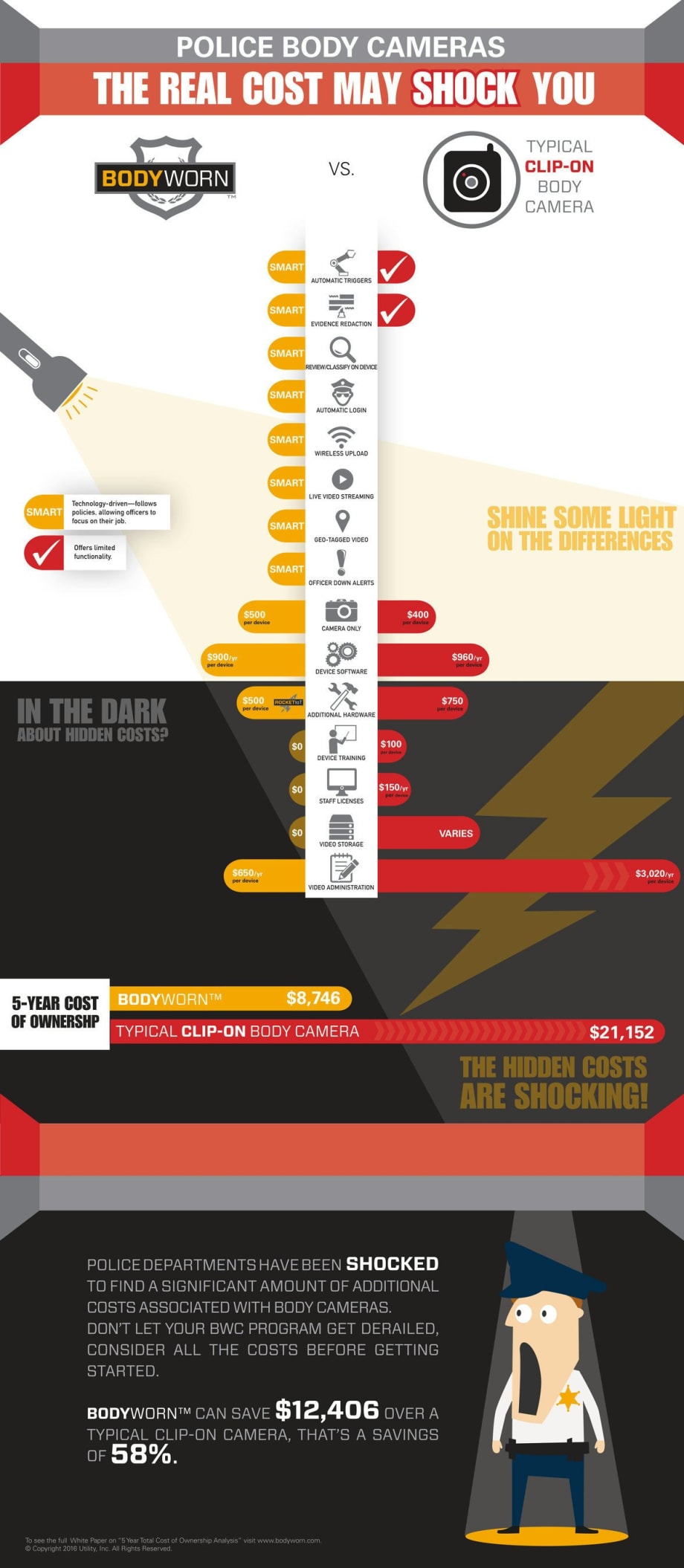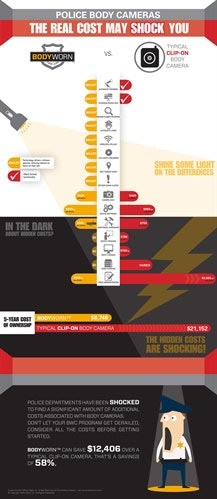The total cost of ownership analysis was calculated based upon a 100-unit body camera deployment over a five-year period. Utility based the comparison of representative body camera devices on information collected in three overall cost categories:
Deployment Costs - Camera and docking station hardware and software, network infrastructure enhancements, software seat licenses and training.
Direct Operating Costs - Operations support staff, video upload and storage, officer overtime to dock cameras, and retraining for changes in video recording policy and operating procedures.
Indirect Operating Costs - Police department video management support staff for video classification, redaction, security, and distribution; District Attorney; and other video consumer support staff.
A big hidden cost, according to the analysis, comes from video redaction. McKeeman cites a 2015 study from the U.S. Department of Justice that evaluated the impact of body-worn cameras.
"[In the study,] officers only remembered to turn on manually operated body cameras 13% of the time the Phoenix Police policy said they should have," he stated."Police Departments should want body-worn cameras that also increase police officer safety, particularly when the 5-Year Total Cost of Ownership is less than half that of a simplistic manually operated, clip-on camera."
He goes on to note that the ability to redact video quickly and at a low cost helps with police transparency and accountability and protects the privacy of police officers and citizens.













